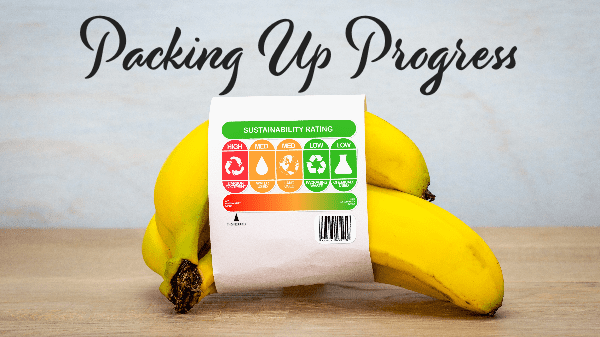
A major factor driving packaging innovation that has touched every aspect of the produce and greater food industry is fallout from the pandemic.
After an initial drop in fresh food consumption, consumers have returned to the produce aisles in force. Accompanying this increase has been a concomitant desire for reduced packaging and more eco-friendly options.
“Environmental concerns have been the major factor in pushing forward improved packaging,” opines Tony Incaviglia, vice president of sales and marketing for McAllen, TX-based GR Fresh BB #:152629, a grower, distributor, and importer/exporter.
“Public concern has risen over the disposal of this packaging,” he continues. “Much discussion of more recyclable, eco-friendly, and even 100-percent compostable plant-based packaging has been a work in progress.”
He also notes that such developments come at a price, and the cost of compostable and recyclable packaging will likely be passed on to consumers, leaving the question of whether retailers and foodservice entities will also be willing to pay for the upcharge.
Legislation, of course, is another major driver of industry responses, and therefore of innovation. As many traditional plastics do not degrade naturally, and ultimately build up in landfills disrupting the ecosystem, laws regulating the use of these items are coming fast.
“We will continue to see the introduction of legislation that aims to mitigate the use of single-use plastic,” predicts Chuck Sinks, president of sales and marketing for Sage Fruit Company, LLC BB #:163180 in Yakima, WA.
“As producers, we’re tasked with being able to provide end-of-life strategies for packaging,” Sinks says. “With all of this coming into play, we’ll see more biodegradable and compostable options available. As more packers are purchasing them, we should also see the pricing of these options decrease.”
Of course, with innovation such a huge driver of business, some technology is simply developed for its own sake.
Dr. Eva Almenar Rosaleny, associate professor at the Michigan State University School of Packaging,
points to antimicrobial copper and the antioxidant ethoxyquin, which act as organic antifungal vapor and prevent the growth of mold in packaged produce.
They can be found in a new insert from Chicago-based Hazel Technologies, Inc., and are quite effective in extending shelf life.
This is an excerpt from the Applied Technology department in the July/August 2023 issue of Produce Blueprints Magazine. Click here to read the whole issue.
A major factor driving packaging innovation that has touched every aspect of the produce and greater food industry is fallout from the pandemic.
After an initial drop in fresh food consumption, consumers have returned to the produce aisles in force. Accompanying this increase has been a concomitant desire for reduced packaging and more eco-friendly options.
“Environmental concerns have been the major factor in pushing forward improved packaging,” opines Tony Incaviglia, vice president of sales and marketing for McAllen, TX-based GR Fresh BB #:152629, a grower, distributor, and importer/exporter.
“Public concern has risen over the disposal of this packaging,” he continues. “Much discussion of more recyclable, eco-friendly, and even 100-percent compostable plant-based packaging has been a work in progress.”
He also notes that such developments come at a price, and the cost of compostable and recyclable packaging will likely be passed on to consumers, leaving the question of whether retailers and foodservice entities will also be willing to pay for the upcharge.
Legislation, of course, is another major driver of industry responses, and therefore of innovation. As many traditional plastics do not degrade naturally, and ultimately build up in landfills disrupting the ecosystem, laws regulating the use of these items are coming fast.
“We will continue to see the introduction of legislation that aims to mitigate the use of single-use plastic,” predicts Chuck Sinks, president of sales and marketing for Sage Fruit Company, LLC BB #:163180 in Yakima, WA.
“As producers, we’re tasked with being able to provide end-of-life strategies for packaging,” Sinks says. “With all of this coming into play, we’ll see more biodegradable and compostable options available. As more packers are purchasing them, we should also see the pricing of these options decrease.”
Of course, with innovation such a huge driver of business, some technology is simply developed for its own sake.
Dr. Eva Almenar Rosaleny, associate professor at the Michigan State University School of Packaging,
points to antimicrobial copper and the antioxidant ethoxyquin, which act as organic antifungal vapor and prevent the growth of mold in packaged produce.
They can be found in a new insert from Chicago-based Hazel Technologies, Inc., and are quite effective in extending shelf life.
This is an excerpt from the Applied Technology department in the July/August 2023 issue of Produce Blueprints Magazine. Click here to read the whole issue.



